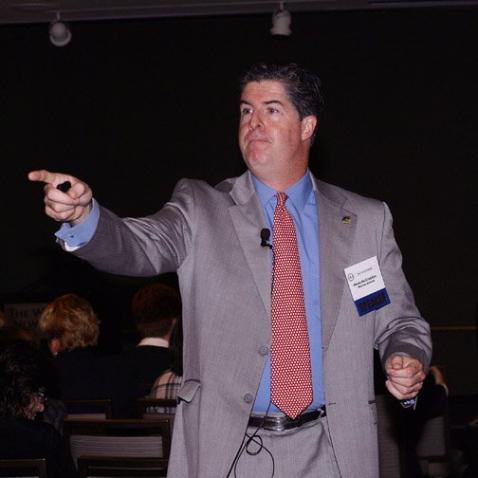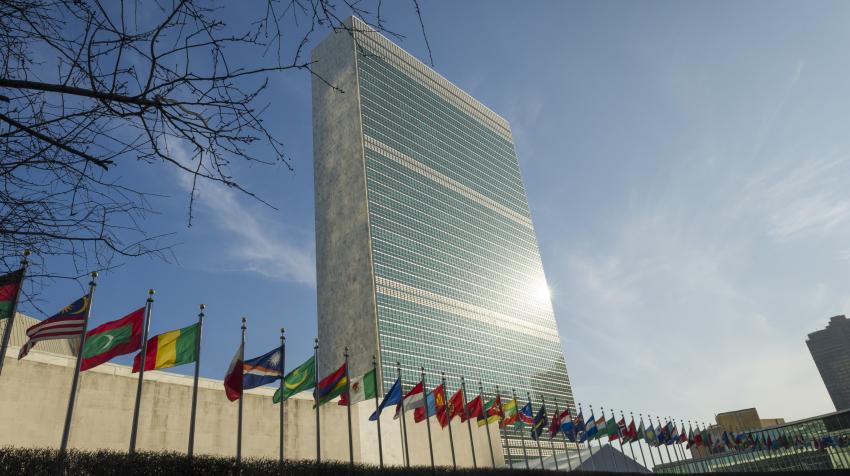The concepts of world peace, solidarity and harmony are etched into the DNA of the United Nations. They form the very foundation of the institution, although we know the Organization was born out of one of the gravest and darkest events in human history.
I have been called “Mr. Motivation and America’s CMO—Chief Motivation Officer,” and I do frequently find myself looking at the brighter side of things and trying to motivate and inspire people to see the positive or the lessons learned in almost every situation. In fact, I established the National Motivation & Inspiration Day, celebrated in the United States annually on 2 January. The Day was officially recognized by the United States Congress months after the tragic events of 11 September 2001.
Governments, non-governmental or multinational organizations employing thousands of staff and agents in disparate parts of the world can struggle to maintain a sense of cohesion, mission or purpose. This is why many companies and organizations spend so much time developing their vision and mission statements, which serve as guiding principles that define organizations and companies and what they stand for. It empowers them with a laser focus on what they seek to achieve.
While the United Nations is widely seen as “the world’s peacekeeper”, there are, in fact, many moving parts and departments with thousands of employees and officials who are responsible for everyday events and activities. Such activities may not directly correlate with world peace and harmony, but they are nevertheless essential to the United Nations and its causes. Sometimes, staff members find themselves doing things they never thought they would do, that have very little to do with their job or the reason they took the job. This is much like the great groundskeeper at a major sporting club who maintains the turf at a certain level that is favourable for the home team: He or she may sometimes feel underappreciated and undervalued until their contribution is seen as a direct contribution to the club’s success.
So, how can leaders and their teams in the United Nations system maintain their inspiration and motivation as they work to build a sustainable world of peace, solidarity and harmony?
Many forms of research conducted over many years have indicated, maybe not surprisingly, that money has rarely been the highest form of motivation.
To my mind and teaching, there is a distinct difference between “inspiration” and “motivation.” These are terms that people tend to use interchangeably, but they are significantly different. Inspiration is the light, the magic, the fire that sparks inside people’s hearts or brains or souls. It stems from something they see or read or hear that turns on the light! It ignites this energy inside them and they find passion to want to do something. They become inspired! Now what?
Surely, when people are hired to work for the United Nations they are inspired, energized, invigorated! They come to work with the greatest intentions, energy and enthusiasm. Then what?
Well, at some point, whether it takes six months or six years, the situation can change. That amazingly inspired employee becomes frustrated or disenfranchised, or decides that he or she dislikes their job, their coworkers, their manager or the company itself. For different people, it takes a different amount of time.
Ultimately, people come to work for their direct manager; or, conversely, they leave because of their direct manager. He or she either “inspires” or “motivates” staff, or is uninspiring or demotivating.
This is where motivation and determination kick in. It is easy to work long hours with little appreciation when one begins any job, because they are typically so excited and inspired and think it’s the best job for the best company or organization in the world. But, as employees become dissatisfied, they begin to find other disgruntled employees that want to complain about their coworkers, their boss, their job or the company itself.
It falls upon the leaders of any organization to figure out how to motivate and inspire their staff. How can unhappy employees be continually motivated to do their jobs well?
Peter Drucker, the famous American management guru, was quoted as saying, “Leadership is doing the right things; management is doing things right.” Once leadership has chosen the direction and mission, it must choose the “things,” the metrics, for management to do “right.” Leaders, then, struggle with what factors need to be in place in order to increase performance. Is it pay? Is it respect? Is it a sense of belonging? Is it a sense of “power” and control? What are the “things” that can motivate and inspire workers to continue to strive for excellence?
As set out in the ‘21st Century Multidimensional Hierarchy of Needs’, which I developed and is now considered one of the most significant additions to Dr. Abraham Maslow’s Hierarchy of Needs, a manager must ensure that the culture he or she creates in a workplace meets the needs of the employees. Many forms of research conducted over many years have indicated, maybe not surprisingly, that money has rarely been the highest form of motivation. Employees who have taken part in such research have indicated that they are motivated by a positive work culture, a sense of belonging (right out of Maslow’s Hierarchy), being included in decision-making, a sense of inclusiveness, and making people feel like their opinion matters.

So, whether it’s a company that manufactures widgets or the United Nations—“the peacekeepers of the world”—there are certain steps that I recommend to increase motivation, inspiration and passion within an organization.
Each year should start with a mission that ties directly to the vision of the organization. Again, your vision and mission statements are critically important because they are often connected. This mission should be delivered in a compelling and passionate way, so that the entire organization feels inspired and uplifted, knowing what the goal is for the year. This theme can change from year to year and be reinforced throughout the year by refocusing on the things that need to be done to achieve success.
The International Day of Conscience (5 April), declared by the United Nations General Assembly in resolution 73/329 of 25 July 2019, provides another opportunity to focus single-mindedly on the vision and mission of the United Nations and its subsidiary organizations, so that everyone is working diligently, and in many cases, tirelessly towards the achievement of the same goals.
Part of establishing a positive work culture is the implementation of what I call a “management system.” This system provides a process that all leaders, senior managers and front-line managers understand and know how to implement; no matter where they end up in the organization, they follow the same system. This enables and empowers managers throughout the organization anywhere in the world to know how to implement the “right things” that need to be completed in order to accomplish organizational goals, thereby reinforcing motivation and a sense of unity.
The culture of rewarding positive performance enables people to feel good about working hard and doing their job well.
Next, a mutually respectful culture that values people and their performance should be established. Respecting all people and creating peace and harmony are important missions in themselves. However, a work environment that rewards positive performance is different and can be very challenging in some organizations. The culture of rewarding positive performance enables people to feel good about working hard and doing their job well. On the other hand, a culture that continues to reward staff even when they are not performing well becomes demotivating for the rest of the group. In many studies, this has been reported to cause tension and resentment in the workplace. While it is important to have mutual respect for people, a positive work culture respects and rewards those who do their job well and with respect for the work. So whether it be the cleaning staff who make the General Assembly Hall look spotless for TV, or the Secretary-General delivering a powerful, uplifting speech from that podium, everyone can feel proud that they have contributed in some way to a positive outcome. This sense of belonging and being a contributing member of the team enables each member to feel good about themselves and their job.
However, there are times like these we are now living through, as the world grapples with a global pandemic, that challenge us all. When such huge, terrible events occur, the work we have done or are doing may not seem to be making a difference, like water flowing off the top of a waterfall. No matter what efforts one makes, they don’t seem to change the outcome. This is where creative and inspirational leadership can provide examples of similar challenges from the past that were eventually overcome, and show how diligence, determination, tireless work and faith pay off. In the midst of the challenge, the situation can feel unstable or uncertain; but if you stay the course and truly believe in your vision and mission, you can overcome anything.
The United Nations represents a beacon of light shining on what is good in the world. Many of the Organization’s peacekeeping and peacebuilding missions are directly intended to enhance and foster harmony, solidarity and peace in the world. For this reason, each and every staff member and official of the United Nations must feel a sense of pride in the institution and its vision. Nevertheless, every day, it is vital that each individual stays motivated, energized, enthusiastic and empowered to do their part, big or small, to contribute to the greater good. There is no greater mission than to participate in making the world a better place for all mankind.
4 April 2020
The UN Chronicle is not an official record. The views expressed by individual authors, as well as the boundaries and names shown and the designations used in maps or articles, do not necessarily imply official endorsement or acceptance by the United Nations.
The UN Chronicle is not an official record. It is privileged to host senior United Nations officials as well as distinguished contributors from outside the United Nations system whose views are not necessarily those of the United Nations. Similarly, the boundaries and names shown, and the designations used, in maps or articles do not necessarily imply endorsement or acceptance by the United Nations.




